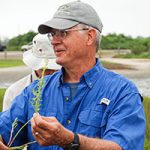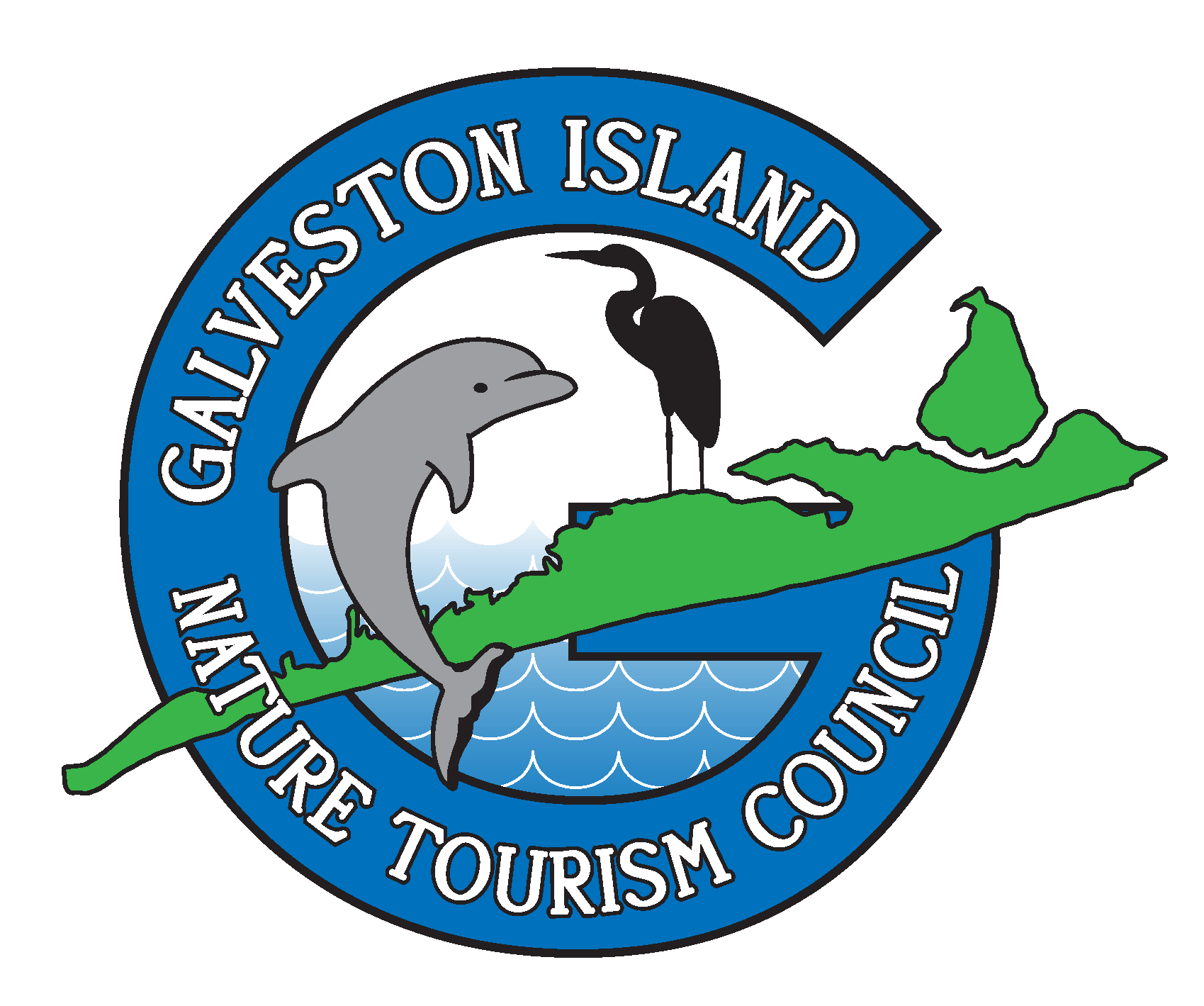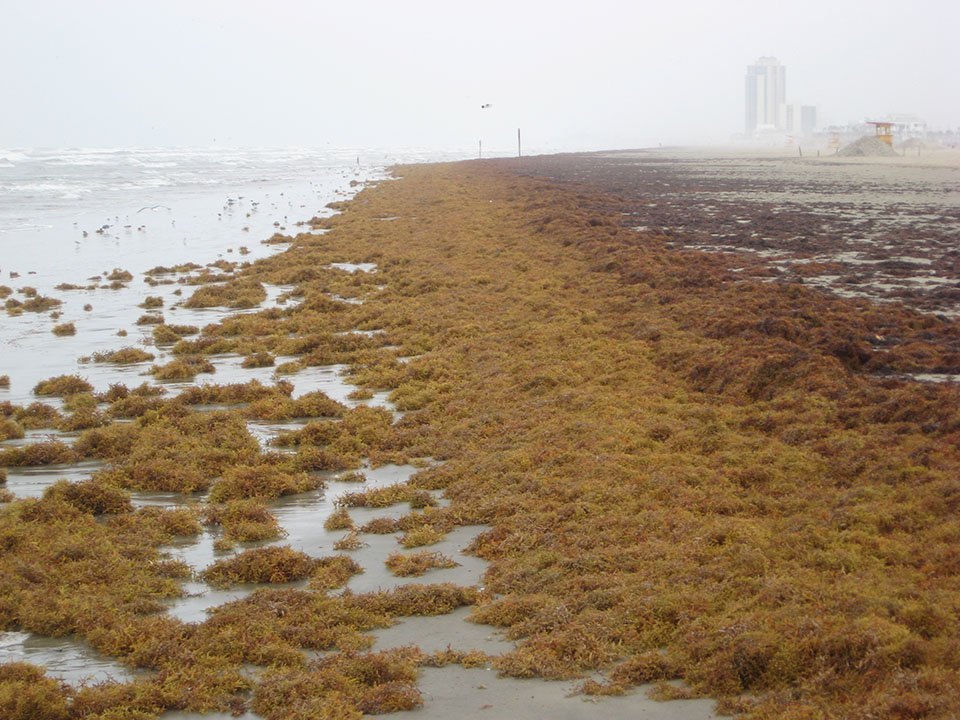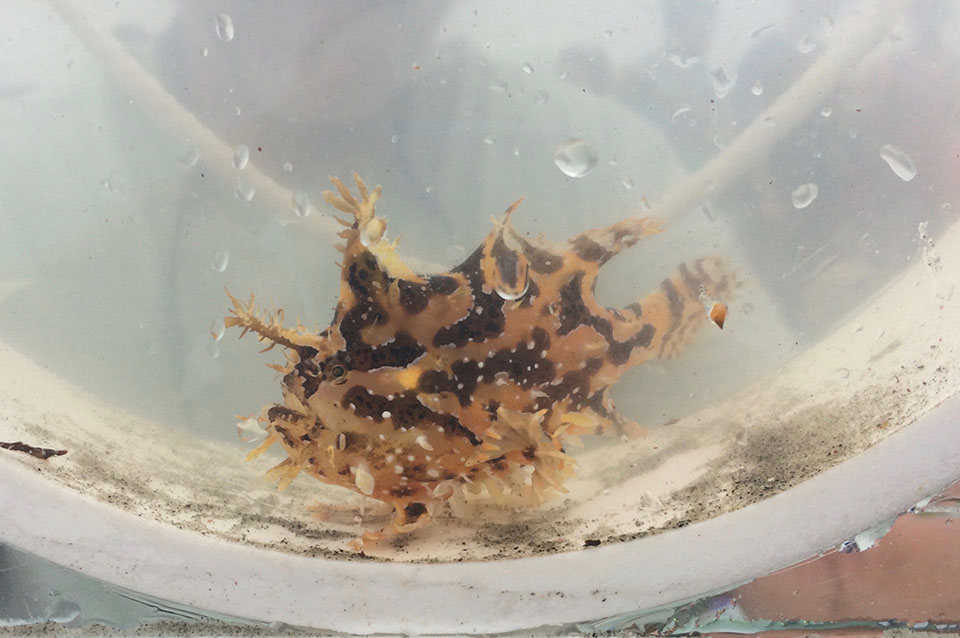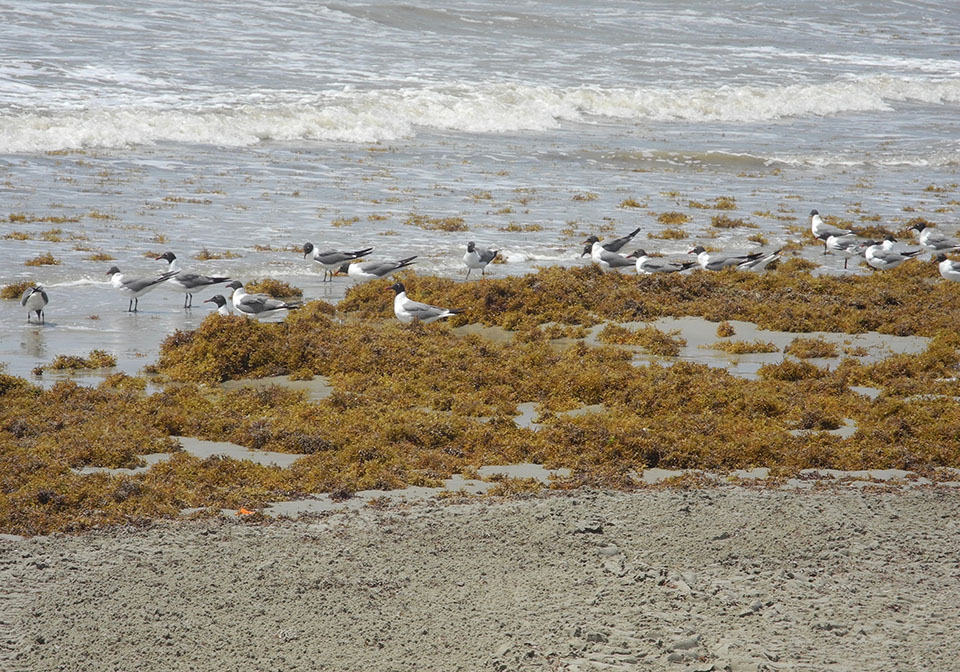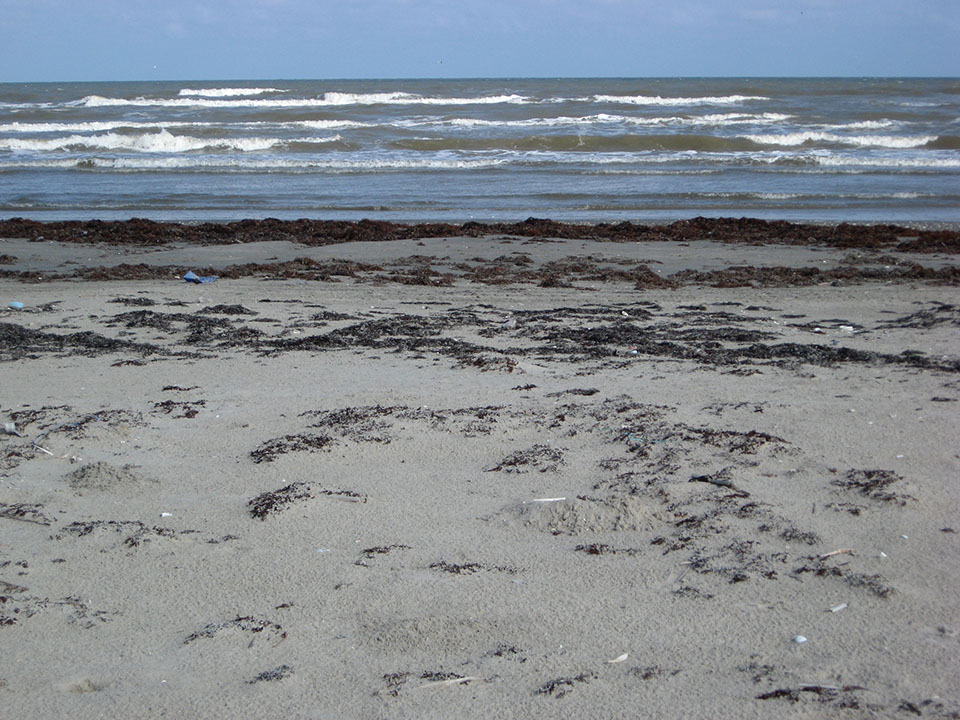by Steve Alexander
It became clear several months ago that the annual sargassum bloom in the Atlantic Ocean was going to be massive. The record-breaking seaweed “blob” could head our way, perhaps hitting Galveston’s beachfront by summer’s end.
The seaweed blob is a species of brown algae called gulfweed or sargassum. It’s buoyed by numerous air-filled sacs that allow it to float under the influence of winds and currents. When conditions are right, substantial amounts can drift shoreward and eventually strand on the beach.
Fortunately, the blob is shrinking. If it arrives on our shores, it will accumulate in piles (see photo). Piles can be unsettling for beachgoers who must smell its rotting masses, walk over it and wade through it.
But seaweed has a good side, ecologically speaking. It provides benefits both at sea and on shore. While adrift at sea, gulfweed provides a home for a community of animals similar in color and shape to the weed. These include shrimp, crabs, nudibranchs, snails, worms, sea anemones, hydroids, bryozoans and fish (see photo).
As it floats at the surface, it provides food and refuge for a variety of young fish, and is the habitat of young sea turtles. At sea, large rafts of gulfweed, with its heap of animals, attract a variety of large predatory game fish, a tidbit well-known among seasoned offshore fishermen seeking a trophy catch.
As it washes ashore, lingering at the water’s edge are laughing gulls (see photo), ring-billed gulls, sanderlings, ruddy turnstone and willets, all waiting patiently to pick up the tiny shrimp and other resident animals dislodged from the seaweed as waves roll it across the sand.
Ghost crabs, whose burrows are typically found near the dunes, dig holes just above the water’s edge among masses of stranded seaweed, a tactic that provides them easy access to a bountiful food source as it decays.
Winds and waves eventually move seaweed further up the beach, where it traps sand (see photo) and attracts small invertebrates like beach fleas and flies, which in turn make a nice meal for small shorebirds. If left alone, some weed eventually migrates upward to the dunes, adding a source of nutrients that feed the growth of dune plants.
If the seaweed “blob” does head our way this summer, a collective groan is allowed. But don’t forget this fact: Seaweed has a good side.
Steve Alexander
Steve Alexander teaches wetlands management at Texas A&M University at Galveston and is a former member of the Board of Directors of the Galveston Island Nature Tourism Council. He is the author of Exploring Galveston: A Naturalist’s Guide to the Island.
